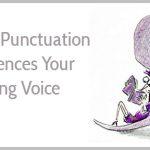Art therapy is a powerful form of psychotherapy that can help individuals improve their mental health by using the creative process of making art to explore emotions, thoughts, and feelings. In this article, we will explore the many benefits of art psychotherapy and how it can be used as a complementary treatment for individuals struggling with mental health issues.
What is Art Therapy?
Art therapy uses the creative process of making art to improve physical, mental, and emotional well-being. The focus of this psychotherapy is on the individual’s experience of creating art, rather than the end product. This means that anyone can benefit from art psychotherapy, regardless of their artistic ability or background.
How Art Therapy Can Improve Mental Health
Art therapy can be a powerful tool for improving mental health in many different ways. Here are some of the key benefits of art psychotherapy:
- Expressing Emotions
One of the primary benefits of art therapy is that it can help individuals process and express emotions that may be difficult to verbalize. Creating art can be a way to externalize and make tangible the internal experiences of difficult emotions such as anxiety, depression, or trauma. This can be a powerful step towards healing and can help individuals feel more in control of their emotions.
- Developing Self-Awareness and Mindfulness
Art therapy can also help individuals develop a greater sense of self-awareness and mindfulness. By focusing on the present moment and the act of creating art, individuals can learn to tune out distractions and negative thoughts, and instead cultivate a greater sense of calm and inner peace. This can be particularly helpful for those who struggle with stress or anxiety.
- Developing Coping Skills and Resilience
Another benefit of art therapy is that it can help individuals develop coping skills and resilience. Through the act of creating art, individuals can learn to channel their emotions in a healthy and productive way, rather than turning to unhealthy coping mechanisms such as substance abuse or self-harm. In addition, the act of creating art can be a source of empowerment, helping individuals feel more in control of their emotions and their lives.
- Medical Benefits
Art therapy is increasingly used in medical settings, particularly for individuals who are undergoing treatment for illnesses such as cancer. Creating art can be a way for individuals to express their emotions around their illness and treatment, and can provide a sense of control and autonomy in a situation that can feel overwhelming.
Types of Art Therapy
There are many different types of art therapy, the specific approach used will depend on the individual’s needs and goals. Here are some examples of different types of art therapy:
- Structured Art Therapy
Some art therapists use a more structured approach, such as asking individuals to create art around specific themes or emotions. This can be helpful for individuals who may feel overwhelmed by the open-ended nature of art therapy.
- Open-Ended Art Therapy
Others may use a more open-ended approach, allowing individuals to explore their emotions in a more free-form way. This can be helpful for individuals who are comfortable with the creative process and may have specific goals in mind for their art therapy sessions.
- Group Art Therapy
Group art therapy is another type of psychotherapy that can be particularly helpful for individuals who benefit from social support. Group art therapy sessions can provide a sense of community and can help individuals feel less alone in their struggles.
Conclusion
Art therapy is a powerful tool for improving mental health, and it can be used as a complement to traditional mental health treatment. By using the creative process of making art to explore emotions, thoughts, and feelings, individuals can develop coping skills, resilience, and self-awareness. There are many different types of art psychotherapy, and the specific approach used will depend


